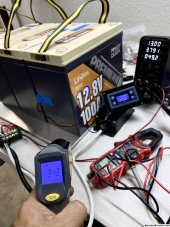Solarinstaller
New Member
- Joined
- Nov 1, 2022
- Messages
- 1
Hello,
I purchased RV tank heater pads that will recommends but on the pads it speicfies NOT to attach to conductive materials and a lot of the insulating foam material I use has metal foil and the housing of the batteries are metal as well.
Will recommend attaching it to sheet metal.
Have any of you stuck it to metal objects that you have attached it to?
How did it work out for you guys?
Thanks.
I have a half dozen battery systems I have built for people I need to protect from freezing.
I purchased RV tank heater pads that will recommends but on the pads it speicfies NOT to attach to conductive materials and a lot of the insulating foam material I use has metal foil and the housing of the batteries are metal as well.
Will recommend attaching it to sheet metal.
Have any of you stuck it to metal objects that you have attached it to?
How did it work out for you guys?
Thanks.
I have a half dozen battery systems I have built for people I need to protect from freezing.





